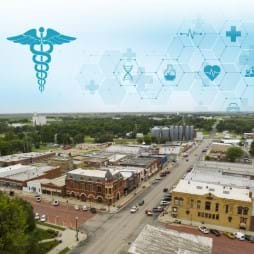
Rural Economy
(Selected research findings from FY 22)
Access to health care involves affordability, which is often tied to health insurance coverage, as well as availability of health care facilities and providers. Self-employed workers are less likely to have access to employer-sponsored health insurance plans, and rural areas may have fewer options for local health care. However, a household with both self-employed and private- or government-employed workers was nearly three times less likely to be completely uninsured than one solely self-employed. Through the lens of availability and affordability, this report studies health care access for self-employed individuals, their families, and their households in nonmetropolitan counties, using data collected between 2014 and 2020. The results indicate that health insurance coverage rates and sources differ more by age and whether workers are self-employed than by whether they live in a metro or nonmetro location.
Nonmetro persistently poor counties led the Nation in cumulative COVID-19 cases starting in late September 2020
ERS provides up-to-date information on rural economic and demographic trends in an annual series, Rural America at a Glance. During the third surge, which started in late September 2020, the entire Nation experienced high weekly rates of new COVID-19 infections, with no particular county type leading the surge. However, rural persistently poor counties experienced the highest peak during the third surge, with a 2-week moving average of 572 cases per 100,000 people in mid-January 2021. After a steep decline in new infections in late January and February 2021, the third surge ended, and cumulative cases leveled out with the help of vaccines.
SNAP benefits can only be spent on food-at-home items—farm and food processed goods. However, SNAP benefits free up money that the household would otherwise need to spend on food. Thus, each dollar of SNAP benefits leads to a net increase in food spending of less than $1, with freed-up resources spent on other goods and services. While $71 billion in SNAP benefits were spent on food each year during the period of 2009-14, ERS researchers found in this report that households’ substitution of SNAP for other income resulted in a net annual increase of $26.7 billion in food-at-home purchases as well as a net annual increase of $44.3 billion in nonfood purchases through freed-up resources.


 In 2018, self-employed working-age adults were more likely to be uninsured than those employed by government or other employers
In 2018, self-employed working-age adults were more likely to be uninsured than those employed by government or other employers ERS estimates SNAP benefits spent by eligible households generated an annual increase in rural and urban industry output of $48.8 billion and $149.3 billion
ERS estimates SNAP benefits spent by eligible households generated an annual increase in rural and urban industry output of $48.8 billion and $149.3 billion